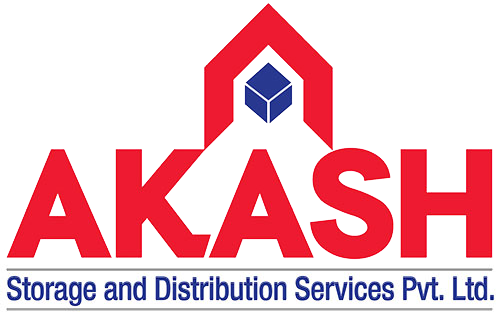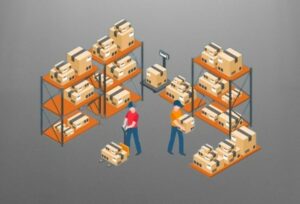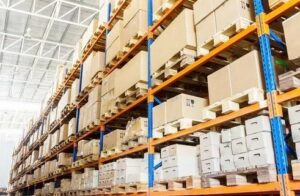The modern world is dependent on the efficient functioning of warehouse processes. They store and move goods of all kinds, from food to electronics, safely and securely. But what warehousing processes take place within these warehouses? From receiving to returns and everything in between, warehouse processes are critical for successful businesses. Read on to discover the 12 most important 3PL warehouse processes and how to improve them for a smoother operation. Are you ready to enter the exciting world of warehousing?
What is Warehousing Processes?
Warehousing processes is generally the process of management and storage of goods which will be picked, packed, and shipped later to the customers. It is a critical element in the supply chain, ensuring that products reach their destination on time and in good condition. By definition, a warehouse is a facility that is used to accumulate and store goods for further processing.
12 Most Important Warehouse Processes
Here we have listed the 12 most important warehousing processes to fulfil the orders efficiently and effectively.
1. Receiving
When it comes to warehouse processes, receiving is one of the most important steps. It involves ensuring that all goods that have been ordered arrive in acceptable quality and quantity.
Having a well-defined and structured warehouse receiving process ensures stock count accuracy, lesser or no stockouts, and optimal inventory levels and storage. Flaws in the receiving process can lead to discrepancies in inventory records and actual inventory at hand causing issues and challenges in order fulfilment.
How to Improve Warehouse Receiving:
- To enhance this process, start by scheduling deliveries to manage manpower and space better.
- Implement a well-defined system for inspecting and counting received goods to maintain accuracy and avoid discrepancies.
- Use technology such as barcode scanners or RFID technology for faster and more accurate processing.

2. Put-Away
Putaway warehouse process means the placement of inventory (goods) in their designated areas in the warehouse after receiving. This is done by put-away staff who are notified on the receipt of inflow.
A streamlined and efficient putaway process helps your business by making the putaway easier for the next set of inventory batches. Also, it reduces the chances of inventory lost or misplacement. Since your warehouse workflow becomes more organized and clean with a proper putaway process, it helps the picking process to become more seamless, quick, and easy, requiring lesser human and technological resources.
How To Improve Putaway Process:
- Begin by incorporating a Warehouse Management System (WMS) which can automate the putaway process by guiding workers to the optimal storage location based on space availability and item demand
- Utilizing technology like barcode scanners or RFID can also speed up the putaway process and improve accuracy.
- The layout of the warehouse plays a significant role – ensuring that high-demand items are stored in easily accessible areas to reduce retrieval time later.
It’s crucial to standardize these processes to maintain consistency, reduce errors, and enhance overall warehouse productivity.
3. Picking
Picking is the warehouse process of selecting and collecting goods from the warehouse to fulfil a customer order. Order picking in a warehouse is one of the most labor intensive tasks and it constitutes to more than half of the warehouse operations cost.
Warehouse picking process directly impacts the customer satisfaction, business profitability, and brand image. Therefore, this warehousing process should be executed with accuracy and precision to make sure that the correct order and quantity of items reaches its destination on time. Depending on the business, there are several picking methods such as batch picking, zone picking, wave picking, and more. You can choose the most appropriate picking method to reduce operational costs, enhance warehouse efficiency, boost customer satisfaction, and improve productivity.
How to Improve Warehouse Picking:
- Using autonomous mobile robots (AMRs) or automated guided vehicles (AGVs), workers can pick more orders simultaneously, reducing human error and improving picking speed.
- Investing in a robust WMS software can provide real-time inventory visibility, intelligent optimal routing for pickers, automated guided picking and can help reduce mis-picks and reworks.
- Technologies provide real-time guidance to warehouse workers about the location of items like Voice-directed systems give workers hands-free instructions via a headset, while light-directed systems illuminate the bin or item to be picked.
- Picking strategies like batch picking involves multiple order simultaneously and zone picking assigns workers to specific areas in the warehouse to minimize travel time

How to Improve Warehouse Packaging:
- Automated packaging systems can create right-sized custom-sized boxes for each order, reducing the need for additional filler material and decreasing package weight.
- Implement a robust package quality control system to inspect, identify and rectify packing errors before the package leaves the warehouse.
- A culture of continuous improvement, where staff are encouraged to suggest improvements to the packing process, can help identify opportunities for efficiency gains.
5. Dispatching
Dispatching is the warehousing process of loading and sending goods out of a warehouse. The dispatch process usually begins with picking the right goods for shipment. The warehouse manager needs to make sure that all items in an order are present and accounted for before dispatching it. Once the items have been selected, they must be safely loaded onto delivery trucks or other transport vehicles. This requires proper coordination between different departments such as shipping, loading and inventory control. After loading is complete, the driver needs to be given detailed instructions about their route and any special instructions relevant to the delivery.
Dispatching requires effective communication with customers and drivers alike in order to ensure accurate and timely delivery of goods. Delays in dispatch can ultimately result in delays in delivery which is a negatively impacting element for your business and its growth.
How to Improve Dispatching Process:
- Streamline the dispatch operations by enabling efficient scheduling and real-time tracking of outgoing shipments.
- Automated systems, like conveyor belts or automated guided vehicles (AGVs), can expedite the movement of goods from the packing area to the dispatch section.
- Investing in a robust transportation management system can help in efficient route planning for delivery vehicles, minimizing transit time.

6. Shipping
Shipping is one of the final steps of warehousing processes. Shipping involves the movement of goods from the warehouse to their final destination. According to stats, more than 80% of the businesses use warehouse management systems (WMS) to manage their shipments. For businesses, it is essential to ship the right products at the right time to the right destination for their shipping process to be successful, efficient, and effective. Therefore, businesses need to be vigilant about various factors like shipment picking and packing, courier partners, labels and transportation, and most importantly tracking.
Common challenges like Inventory shortages, higher fulfilment costs, no real-time visibility, human errors, equipment failure, courier partner related issues and other internal issues can cause damage to productivity, profitability, and growth.
How to Improve Shipping Process:
- Warehouse Management System (WMS) can significantly enhance shipping operations by providing real-time data about inventory levels and tracking outgoing shipments.
- With the help of Transportation management system (TMS), the route planning and carrier selection can be significantly optimized, improving efficiency and reducing costs
- Choose the right courier partner to seamlessly manage and meet customer requirements without any delays or damages
- Being strategic about fulfilment network and inventory placement can lead to faster shipping and shorter delivery times
7. Kitting/Dekitting
Kitting/Dekitting is the warehousing process of assembling and disassembling multiple products into a kit or single unit. This warehousing process is used in warehouses to streamline order management and fulfilment by combining items that typically belong together. Kitting process helps reduce errors in orders as well as ensures that only complete orders are shipped out. Moreover, by bundling products together, warehouses can save on storage space and lower labor costs. It is important as it ensures accuracy when fulfilling orders and eliminates redundant warehousing processes.
How to Improve Kitting Process:
- Establish a dedicated area in the warehouse solely for kitting activities to minimize disruptions and allow workers to focus on assembling kits accurately and efficiently.
- Implement automated systems for kitting processes including conveyor systems, pick-to-light, or robotics, which can reduce human error
- Consider batch kitting, where multiple identical kits are assembled at the same time to increase efficiency by reducing the amount of time spent retrieving items.
- Continually monitor and analyze the kitting process data to help identify inefficiencies, track performance, and inform decision-making.

8. Casing
Casing is the process of gathering goods from their respective storage units while they remain in their cases. This method is typically used for fragile goods that require extra safety and protection during the picking, packing and delivery stages. The traditional method of casing has been done by manual labor; however, modern warehouses have now adopted automated conveyor belts for this purpose. Casing helps to ensure accuracy when fulfilling orders as it eliminates potential errors that may occur during the manual pick-up stage. By using an automated warehousing picking conveyor belt system, a warehouse can speed up the entire process while also saving on labor costs. Moreover, using such a system will prevent damages to goods due to mishandling or incorrect packaging.
How to Improve Kitting Process:
- Identify the items or goods that will require casing to minimize product damages and losses
- Use a mix of manual and automated handling systems to ensure safer picking, packing, and shipping
9. Inventory Tracking
Inventory Tracking is the warehousing process of recording, managing and storing all items present in a warehouse. It is one of the most important warehouse processes in any logistics system as by tracking inventory, warehouses can prevent errors due to lack of stock and ensure that all items are available for sale. The traditional method of tracking and managing inventory involved manual counting which was time consuming and had potential for errors. However, with modern technology, this process has become much more efficient by automating the entire process using software solutions.
The softwares like Hopstack help to provide real-time updates on the current status of inventory levels and leveraging inventory based model of ecommerce so that warehouses can quickly identify any discrepancies or shortages.
How to Improve Inventory Tracking Process:
- Regular cycle counting, which involves counting a portion of inventory in a certain area each day, can help ensure the accuracy of inventory records
- A WMS provides real-time visibility into inventory levels, movement, and location within the warehouse.
- Use automated systems to monitor stock levels and automatically reorder products when they fall below a certain threshold to prevent stockouts and excess inventory
- Internet of Things (IoT) devices, like smart shelves or drones, can automate inventory tracking and provide real-time visibility into inventory
- Standardizing inventory management procedures, such as receiving, putaway, and picking, can help ensure accurate tracking.
![]()
10. Value Added Services
Value Added services is the process of enhancing a product or service to increase its value and make it more attractive to customers. This warehouse process can involve a variety of tasks such as packaging, labelling, branding, and customizing products. Value added services can give you competitive advantage, gain supply chain excellence, generate increased revenue and enhance customer satisfaction. These warehousing processes start with understanding customer needs and preferences so that warehouses can customize products accordingly.
This involves analysing the target market and creating an effective strategy for product enhancement. Warehouses must then determine the type of value-adding services they will offer, such as customization, printing, labelling, etc., depending on their resources and capabilities.
-
Returns
Customer returns are one of the key aspects of the warehouse process where the warehouses have to pick up for restocking or disposal of returned items. With the increasing online shopping trend, this process has become even more important.
The returns process starts with customer requests, which must be taken into account and processed quickly and efficiently. Once a product is returned, warehouses must assess its condition to determine whether it can be reused or discarded. If it can be reused, then manual accounting may not be necessary as electronic systems can track its status and availability.
How to Improve Returns Process:
- Make sure your return policy is clear, concise, and easy for customers to understand to help reduce errors and misunderstandings
- Implement an effective Return Merchandise Authorization (RMA) system that provides a proper mechanism for managing returns and gives clear instructions to customers about the return process
- Using an automated system for returns management can speed up the returns process, reduce errors, and provide faster refunds or exchanges for customers
- Ensure a rigorous quality check process is in place to inspect returned items to identify recurring problems
- Develop a robust system for dealing with returned goods. This might include reselling items, recycling materials, or properly disposing of goods that can’t be resold.

12. Reporting and Analytics
Reporting and analytics are crucial as businesses can gain better insights and understanding of their warehouse operations and make better decisions based on data collection and analysis for operations.
Warehouse reporting and analytics powered by platforms like Hopstack provide detailed performance visibility into all key warehouse operations. Through granular reporting, real-time warehouse metrics, multi-level reports, and comprehensive audit trails, warehouse managers can develop deeper understanding of each and every warehouse process.
How to Improve Returns Process:
- sense of large amounts of data, use data visualization tools that can present data in a clear and understandable manner
- Integrate warehouse management systems to track and analyze performance metrics and trends
- IoT devices can gather data continuously from various points in the warehouse, which can be used for predictive analytics, optimization, and proactive problem-solving
- Predictive analytics can help forecast future demand, optimize stock levels, and improve resource allocation
- Implement real-time monitoring systems to track key performance indicators (KPIs)
Conclusion
Remember that not every strategy will work for every warehouse, as they may depend on factors such as the size of the warehouse, the number of employees, the type of goods stored, and the specific needs of your business. It’s important to regularly assess your warehouse management operations and adapt your strategies as needed.






